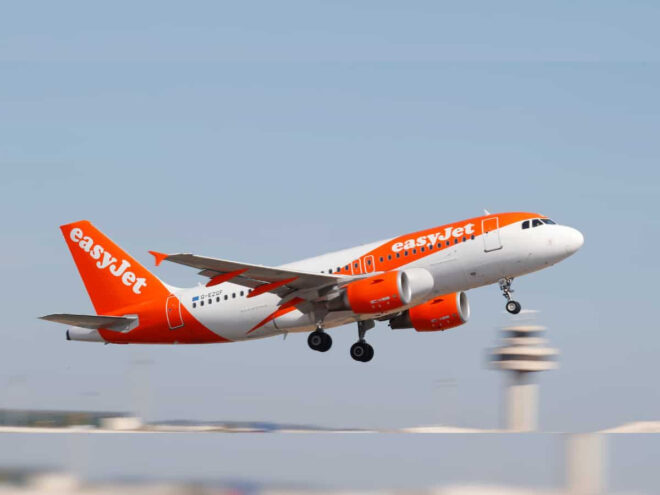
An EasyJet flight carrying 181 passengers departed from the picturesque Greek island of Corfu bound for London Gatwick. The journey, meant to conclude idyllic holidays for many travelers, turned into a harrowing experience when the aircraft encountered intense turbulence shortly after takeoff. The turbulence was so severe that it caused two cabin crew members to sustain significant injuries, including a broken leg, prompting the pilot to take emergency measures and divert the flight to Rome’s Fiumicino Airport.
The flight left Corfu around 12:44 PM local time, climbing to cruising altitude and traveling at a speed exceeding 484 miles per hour. Initial conditions were normal, and the flight crew was carrying out standard procedures to ensure passengers were comfortable. However, without warning, the plane hit a turbulent air pocket, causing it to plummet roughly 200 meters in seconds. Such sudden descents often result from unpredictable atmospheric disturbances, known as Clear Air Turbulence (CAT), which are nearly impossible to detect in advance.
During this abrupt drop, the cabin turned into chaos. Passengers were jolted violently, with many gripping their seats in terror. The real impact, however, was felt by the cabin crew members who, despite being trained for emergencies, were caught off guard and thrown against the aircraft’s walls. Two crew members sustained injuries so serious that immediate medical attention was required.
One passenger, Becky Walters, shared her account of the terrifying ordeal on Facebook. She described the incident as the worst part of an otherwise enjoyable vacation:
> “Fabulous holiday ended with a nightmare journey back from Corfu with terrible turbulence in which we plummeted 200m and two cabin crew were injured with broken leg resulting in emergency diversion to Rome for them to be taken to hospital and a 6-hour wait to be rescued by EasyJet,” Walters wrote.
Her post highlighted both the chaos during the event and the professionalism displayed by EasyJet’s team in the aftermath. According to Walters, the airline deployed a replacement crew and aircraft to transport the passengers safely to London Gatwick. The captain also made commendable efforts to reassure passengers, speaking to them directly and providing regular updates.
> “They sent out the big guns and shepherded us home with constant updates from the captain who spoke to us all in the cabin before flying and kept us constantly updated during [the] return, also turbulent flight. A great PR rescue but they handled it really well in the end,” Walters added.
Following the turbulence, the flight’s captain decided that continuing to London was not an option given the severity of the injuries sustained by the crew. The decision to divert to Rome’s Fiumicino Airport demonstrated the airline’s adherence to safety protocols and prioritization of health concerns. Upon landing, emergency medical teams were ready to assist, and the injured crew members were immediately transported to a nearby hospital.
The delay left passengers waiting for six hours at the airport before a replacement aircraft and crew were dispatched to complete the journey. Despite the inconvenience, many passengers expressed gratitude for the crew’s efforts to ensure their safety.
In response to the incident, EasyJet released an official statement emphasizing its commitment to passenger and crew safety:
> “The flight on August 19 experienced turbulence which unfortunately injured two cabin crew members. As a result, the captain decided to divert the flight to Rome, where the flight attendants received medical assistance,” the airline said.
> “The safety and well-being of our customers and crew are easyJet’s top priority, and our pilots are trained to manage turbulence,” it added.
The statement underscored that while turbulence is an unavoidable aspect of air travel, EasyJet’s crews are well-prepared to handle such situations.
Turbulence remains one of the most common causes of discomfort and fear among air travelers. It occurs due to disruptions in airflow caused by various factors, including atmospheric pressure changes, jet streams, and weather fronts. In some cases, turbulence arises from Clear Air Turbulence (CAT), which is particularly hazardous because it occurs in clear skies without warning, making it undetectable by onboard radar systems.
While turbulence itself rarely causes structural damage to aircraft, it poses significant risks to passengers and crew who are not securely fastened. Injuries, such as those sustained by the EasyJet crew, often result from being thrown against cabin surfaces during sudden drops or jolts.
The EasyJet incident is not an isolated case. Turbulence-related injuries have made headlines multiple times in recent years. In May of this year, a Singapore Airlines Boeing 777 faced severe turbulence at an altitude of 37,000 feet, leading to a rapid descent. Tragically, at least one passenger lost their life, and several others were injured. The aircraft, carrying 211 passengers and 18 crew members, became the center of global attention, sparking renewed debates about air travel safety.
Such incidents highlight the importance of heeding safety instructions, including keeping seatbelts fastened whenever seated, even during smooth flights. While airline crews are highly trained to respond to emergencies, unpredictable turbulence remains a challenge for aviation safety worldwide.
In the aftermath of the August 19 incident, EasyJet went to great lengths to manage passenger concerns and maintain trust. By promptly deploying a replacement aircraft, keeping passengers informed, and ensuring medical care for the injured crew, the airline demonstrated a commitment to professionalism. Passengers praised the captain’s communication, which played a crucial role in calming nerves during a distressing experience.